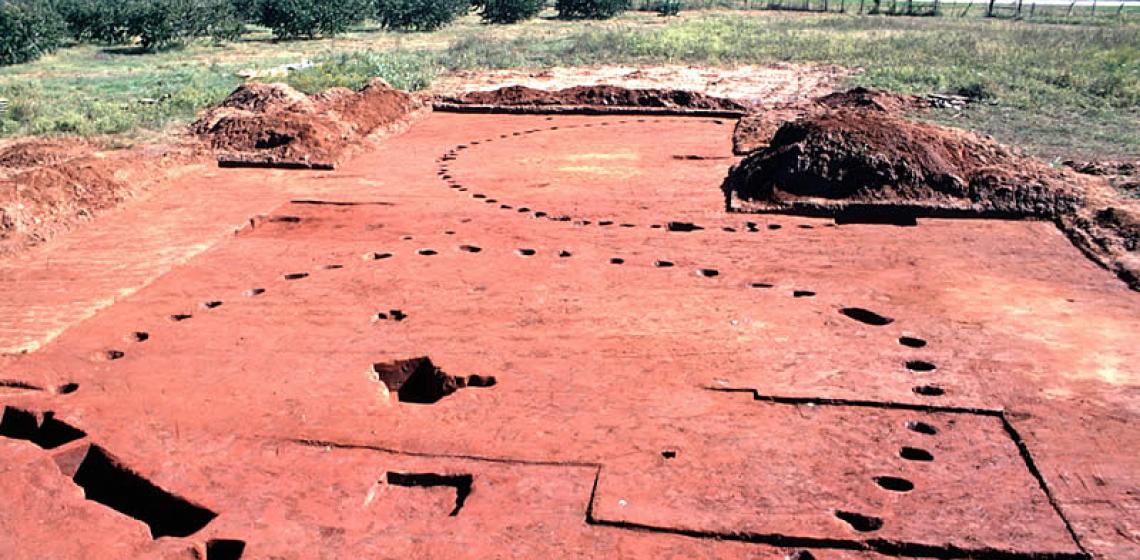Caddo Mounds (US)

Archeologists uncovered these huge circles of postholes - about all that remains of a Caddo house after 800 years.
Caddo Mounds State Historic Site is a prehistoric village and ceremonial center, dating before European exploration. The museum exhibits approximately 200 artifacts dating from A.D. 750–A.D. 1400, including pottery, tools, and weapons. Visitors can walk the 0.7 mile self-guided interpretive trail to see the Caddo’s burial, low temple, and ceremonial mounds.
By the early 1840s, all Caddo groups had moved to the Brazos River area in an effort to avoid Anglo-American colonization. In 1855 the U.S. government moved them to the Brazos Indian Reservation, and in 1859 moved them to the Washita River in Indian Territory, now western Oklahoma. The Caddo still live in western Oklahoma, Binger, Oklahoma being the capital of Caddo Nation of Oklahoma.
One of the most distinctive characteristics of Caddo culture was their pottery, which encompassed many different styles and forms over a span of about 1,000 years (A.D. 800–1800). When archeologists study sites today, this pottery is key in identifying whether it was the Caddo who lived there. Caddo pottery is the prime evidence used to identify and date Caddo sites.
Texas takes its name from the Caddo word tejas, which means friend.
